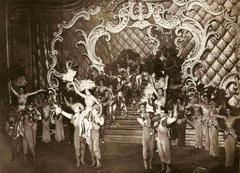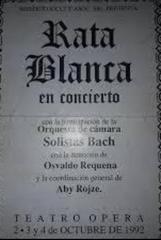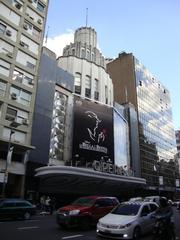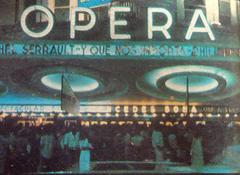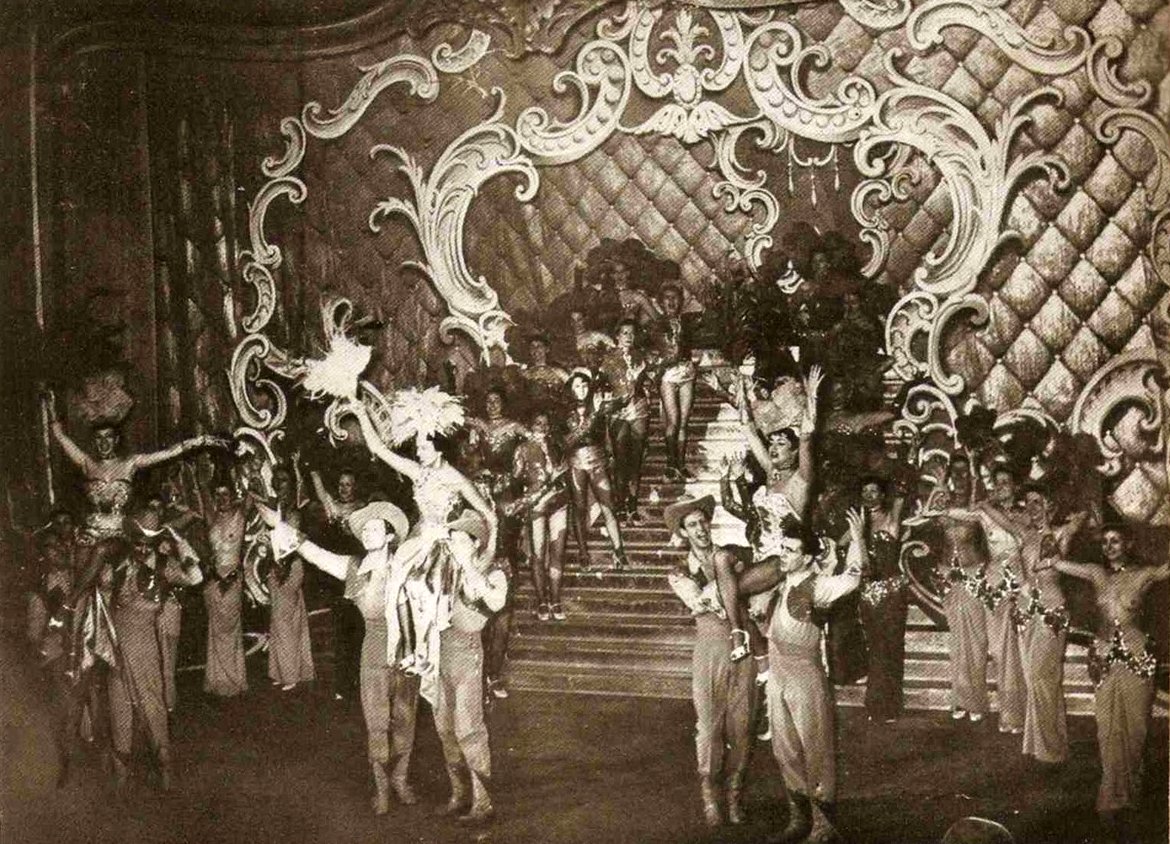
Teatro Opera Buenos Aires: Visiting Hours, Tickets, and Historical Significance
Date: 14/06/2025
Introduction
In the vibrant heart of Buenos Aires, two theaters stand as pillars of the city’s artistic and architectural legacy: Teatro Opera (officially Opera Orbis Seguros) and the legendary Teatro Colón. Both venues are not only celebrated for their world-class performances but also for their rich history, architectural grandeur, and cultural impact. Whether you are an aficionado of opera and ballet, a student of architecture, or a curious traveler, this comprehensive guide will help you plan an unforgettable visit, offering detailed insights into their histories, visiting hours, ticketing, accessibility, and nearby attractions.
For up-to-date schedules and ticket information, always consult the official Teatro Opera website and Teatro Colón official site. Additional travel tips and historical context can be found on trusted resources such as Explore Your Bucket List and Wander Argentina.
Teatro Colón: History and Cultural Prestige
Early Origins and Architectural Triumph
Teatro Colón’s origins trace back to the mid-19th century, with the first building opening in 1857. Financial struggles led to its closure in 1888, but the vision for a world-class opera house persisted. Construction of the current Teatro Colón began in 1890 under Italian architect Francesco Tamburini. The project faced multiple setbacks, including changes in leadership and funding shortages, but was finally completed in 1908. The grand opening featured Verdi’s “Aida,” inaugurating a new era for Argentina’s performing arts (Wander Argentina; Round Trip Argentina).
The theater’s eclectic architecture blends Italian Renaissance, French Baroque, and classical influences. The auditorium, with a seating capacity of over 2,400, is renowned for its horseshoe shape and acoustics—consistently ranked among the world’s finest (WikiArquitectura).
Cultural Flourishing and International Renown
Throughout the 20th century, Teatro Colón became a magnet for legendary artists such as Enrico Caruso, Maria Callas, Luciano Pavarotti, Rudolf Nureyev, and Astor Piazzolla (Archova Visuals; HollyMelody). Its programs expanded to include ballet, symphonic concerts, and chamber music, solidifying its status as Argentina’s cultural epicenter.
Restoration and Modernization
After decades of heavy use, the theater underwent a major restoration from 2006 to 2010, coinciding with Argentina’s bicentennial. The renovations preserved its legendary acoustics and architectural splendor, ensuring its continued role as a global cultural institution (Wander Argentina).
Contemporary Role
Today, Teatro Colón hosts a diverse range of productions, from classic operas and ballets to contemporary concerts. Its educational and outreach programs foster new generations of artists, while its central location makes it a must-see for visitors to Buenos Aires (Teatro Colón Official; Archova Visuals).
Teatro Colón: Visiting Hours, Tickets, and Guided Tours
Visiting Hours
- Guided Tours: Available Tuesday to Sunday, typically from 9:00 AM to 6:00 PM. Last tour times may vary; performance days and holidays may affect the schedule. Always verify with the official website.
Tickets and Booking
- Box Office Hours: Generally open during tour and performance hours.
- Online Purchase: Strongly recommended for both tours and performances via the official site.
- Pricing: Varies by event and seat category. Guided tours are affordably priced.
Accessibility
- Fully wheelchair accessible; elevators and ramps are available.
- Notify the box office in advance for special accommodations.
Guided Tours
- Languages: Spanish (every 15 minutes), English (several times daily), Portuguese (once daily).
- Duration: Approximately 50 minutes.
- Content: Tours include the main foyer, Bust Gallery, Golden Hall, auditorium, and backstage insights (Explore Your Bucket List; Condé Nast Traveler).
Performance Etiquette
- Dress Code: Smart casual for tours; business casual or formal wear recommended for performances.
- Photography: Permitted in public areas during tours (no flash/tripods); not allowed during performances.
Teatro Opera: Art Deco Marvel on Avenida Corrientes
Architectural Significance
Teatro Opera is a premier example of Art Deco architecture in Buenos Aires. The façade features a central volume with curved lines, a stepped tower, black granite, etched glass, and dynamic LED lighting. At night, its illuminated marquee transforms Avenida Corrientes into a vibrant corridor of culture.
Interior Design
Inside, the theater boasts geometric Art Deco forms, marble accents, and a horseshoe-shaped auditorium. The original 1930s decor included a starry ceiling and cityscape murals, immersing visitors in the era’s glamour. Ongoing renovations have preserved its artistic legacy while updating amenities.
Historical Evolution
Originally a revolutionary cinema, Teatro Opera became a protected monument in 2012, ensuring the preservation of its unique heritage (Teatro Opera Official Website).
Seating and Facilities
- Auditorium: Main floor and upper level, designed for excellent acoustics and visibility.
- Accessibility: Wheelchair access, elevators, and ramps throughout.
- Box Office Hours: 10:00 AM to 8:00 PM daily; hours may vary by event.
- Tickets: Buy online or at the box office; prices depend on event type.
Nearby Attractions and Travel Tips
- Teatro Colón and Teatro Opera are centrally located near the Obelisco, Plaza de Mayo, Casa Rosada, and the bustling Avenida Corrientes.
- Transportation: Easily accessible by subway (lines D, B, and C), bus, or taxi.
- Dining and Culture: Explore local cafés, bookstores, and the historic Café Tortoni.
- Visitor Tips: Arrive early, book tickets in advance, and check for guided tour availability.
Visual and Interactive Experiences
- Both theaters offer virtual tours and photo galleries on their official websites.
- Photography is allowed in public areas; restrictions apply during performances.
Teatro Colón: Guided Tours and Performance Experience
- Tour Structure: Spanish, English, and Portuguese tours available; advance booking recommended (Explore Your Bucket List).
- Tour Highlights: Grand foyer, Bust Gallery, Golden Hall, auditorium, and technical features.
- Performance Capacity: 2,478 seats, with standing room for 500; renowned for acoustics and technical sophistication.
- Amenities: Modern restrooms, cloakroom, gift shop, and accessible facilities.
Frequently Asked Questions (FAQ)
Q: How do I buy tickets for Teatro Colón and Teatro Opera?
A: Purchase online through their official websites or at the box office. Early booking is highly recommended.
Q: What are the visiting hours?
A: Teatro Colón: Guided tours Tuesday–Sunday, 9:00 AM–6:00 PM. Teatro Opera: Box office open 10:00 AM–8:00 PM; event hours vary.
Q: Are the theaters accessible?
A: Yes, both venues offer full wheelchair access and additional services for visitors with disabilities.
Q: Are guided tours available in English?
A: Yes; both theaters offer tours in multiple languages.
Q: Can I visit without attending a performance?
A: Yes; guided tours are available at both venues.
Final Recommendations
Teatro Opera and Teatro Colón represent the pinnacle of Buenos Aires’ cultural heritage. Whether you seek the Art Deco elegance of Teatro Opera or the historic grandeur of Teatro Colón, both theaters offer immersive experiences for all visitors. To make the most of your trip:
- Book tickets and tours in advance via official websites.
- Explore nearby cultural attractions to enrich your visit.
- Use public transportation for convenience.
- Download the Audiala app for schedule updates and exclusive cultural content.
By integrating these iconic theaters into your itinerary, you’ll discover the enduring artistry and dynamic spirit that define Buenos Aires as a global destination for the performing arts (OperaWire; Condé Nast Traveler; HollyMelody).
